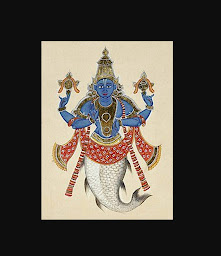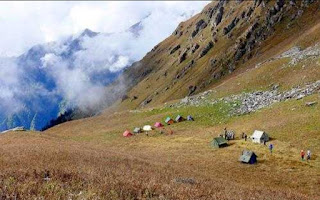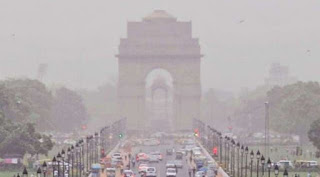Coexistence-Animals & Humans. Best 3 Places to Visit!
Animal Life!! Living in peace with each other
 |
| Vishnu-Matsya, first animal-human god |
A study conducted recently to gauge the trends in visual media consumption among masses, came out with some facts about short videos aka"snackable content". Study divided videos in two categories: Sprint race (Fun) and the other is Marathon race (Impact). Sprint race videos are like fast food easy to cook eat but hard to digest & leave bad impression behind in body and mind. Whereas the marathon race videos desire a far deeper preparation beforehand mise-en-place as they call it in french culinary terms, and the consequent steps are equally elaborate and tiresome. But resultant product is worth of every pinch of salt as they say!
Below is the excerpts from the study-
Theory of Coexistence & Conflict:
In spite of understanding the critical role played by animals in the story of human evolution. Initially this was more to meet our basic requirement, when we were living life of hunter-gathers animals fed us, and as our mind evolved need for farmland was felt for farming and forests were cut, few wild animals were domesticated to help in farming and other errands.
Till here I think it was still a coexistence. But than our greed became better on us and atrocity on animals started. Purpose was now to satiate our demonic instinct in form of the uberchic fashionable accessories (prevalent in western world), aphrodisiac medicinal properties( prevalent in eastern world).. Recently cases of intense hate against horses have come in notice in different part of France, where the mute stallions were brutally tortured by cutting their body parts.. Luckily the South East Asia is still living in medieval times and still practicing coexistence theory.
This madness has no place, 3 key reasons for coexistence are giving below:
Bushmeat is meat from wildlife species that are hunted for human consumption. Bushmeat represents a primary source of animal protein and a cash earning commodity for inhabitants of humid tropical forest areas of Africa, Asia & South America. Bushmeat is an important meal source for poor people especially in rural area. This can be a sustainable tool of coexistence provided commercialization does not invade here and a fine balance between kill and reproduction is maintained.
Tourism is the most profitable business opportunity for any nation which creates immense employment opportunity as well. This employment helps to mitigate the exodus of masses from rural to urban centers and results in balanced growth across geographies. Many countries are promoting ecologically sustainable tourism to preserve the nature in order to the reap the long term benefit. Wildlife tourism is one of the most niche branch of leisure and entertainment. This is possible only if the designated protected flora and fauna is not disturbed, encroached and invaded by people with might and ulterior motive. Insatiable carving for fossil fuel and metals is one big cause to the havoc created in forests which has disturbed the wild life and many of the endangered species are on the verge of extinction.
Best friends of kids Animals are the best companion a child could ask for. we have plethora of incidents where mutual love care and affection has been witnessed between two of the most pure creation of the God. This mutual love is the result of a trust among both, which oozes out more often with their sign language communication. No prize for guessing why animals find a very prominent places in folk tales, fables, bed time stories in almost all cultures. Isn't it very intriguing as well sad, that the same child as he becomes an adult forgets love, friendship and his childhood bonhomie; and starts the age old cycle of cruelty
Conservation: Need of the Hour
These venues are broken down in 3 front:
National Parks an area of countryside, or occasionally sea or fresh water, protected by the state for the enjoyment of the general public or the preservation of wildlife
Wildlife Sanctuary A wildlife sanctuary is an area where animal habitats and their surroundings are protected from any sort of disturbance. The capturing, killing and poaching of animals is strictly prohibited in these regions.
They aim at providing a comfortable living to the animals. India has beautiful wildlife sanctuaries, with dense forests, large rivers, high and beautiful mountains. Few of the these in India are mentioned here. Tourism is not permitted in a wildlife sanctuary. People are not allowed unescorted there.
Biosphere Reserves Biosphere reserves are the protected areas meant for the conservation of plants and animals. It also restores the traditional life of the tribals living in that vicinity. They conserve the biodiversity of that area. This is broken down in 3 sets- Core, Buffer, Manipulation.
- Delhi: Delhi - Moradabad - Kashipur - Ramnagar (260 Kms)
- Nainital: Via Kaladhungi to Ramnagar (62 Kms)
- Lucknow: Lucknow - Bareilly - Kicha - Rudrapur - Kashipur - Ramnagar (436 km)
- Dehradun : Dehradun - Ramnagar (232 km)
Also known as Govind Pashu Vihar is located in Purola Tehsil of Uttarkashi district in Uttarakhand. This pristine place was established in 1955 to protect the endangered Himalayan snow leopard. A nature's paradise spread over 957.3 sq. km. with a varying altitude of 1300 meters to 6323 meters has Naitwar as the entrance and starting place of the sanctuary.
This Sanctuary experiences heavy snow fall and the vegetation is enriched by the River Tons which is an important tributary of the Yamuna. This area is extremely rich in medicinal plants and is considered as a mecca for those versed in Ayurveda. There are 15 species of mammals and 150 varieties of birds which call Govind wildlife sanctuary as their home. Few famous inhabitants here are: Himalayan snow leoprad, Himalayan black bear, Brown bear, the ever elusive Musk dear, Serow. The endangered birds found in this area are Monal pheasant, Koklas Pheasant, Himalayan snow fowl, Golden Eagle,Minivets and Finches.
Trekking is another key attraction this place is known for. With four basic trek routes available in this park ,nature gazers are spoiled by the choices.38km long Sankri- Taluka-Osla-Har Ki Dun is the most favourable route. 60 km long Naitwar-Himri-Droni-Rupin is the most challenging due to the harsh ups and down in the course. Other two fairly balances routes are Sankri-Taluka-Osla-Ruinsara-40 km and 20 km long Ruinsara-Yamunotri.
Distance from Major Cities:
- Delhi: Delhi - Dehradun - Uttarakashi- Dharkadhi (460 Kms)
- Nainital: Via Kaladhungi to Ramnagar-Dehradun-Uttarakashi-Dharkadhi (483Kms)
- Lucknow: Lucknow - Agra - Dehradun - Uttarakashi- Dharkadhi (950 km)
- Dehradun : Dehradun - Uttarakashi- Dharkadhi(200 km
- Nearest Airport: Jolly Grant Airport Dehradun
- Nearest Railway station: Dehradun
- Best time to visit: From April to June and September to November.
- Nainital: Via Ranikhet to Joshimath (271 Kms)
- Lucknow: Lucknow - Bareilly - Nainital- Joshimath (651 km)
- Dehradun : Dehradun - Uttarakashi- Dharkadhi(294 km)
- Nearest Airport: Jolly Grant Airport Dehradun
- Nearest Railway station: Rishikesh
- Best time to visit: Open to public for 6 months May-October. Mid-June to mid-September is the best time to experience the best climate and the stunning beauty of Flora -Fauna.












Really amazing 👍
ReplyDelete